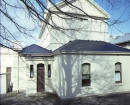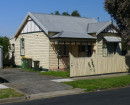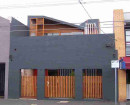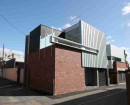Back to search results
FORMER PHOENIX CLOTHING COMPANY
347-349 KING STREET AND 4-8 PHOENIX LANE WEST MELBOURNE, MELBOURNE CITY
FORMER PHOENIX CLOTHING COMPANY
347-349 KING STREET AND 4-8 PHOENIX LANE WEST MELBOURNE, MELBOURNE CITY
All information on this page is maintained by Heritage Victoria.
Click below for their website and contact details.
Victorian Heritage Register
-
Add to tour
You must log in to do that.
-
Share
-
Shortlist place
You must log in to do that.
- Download report
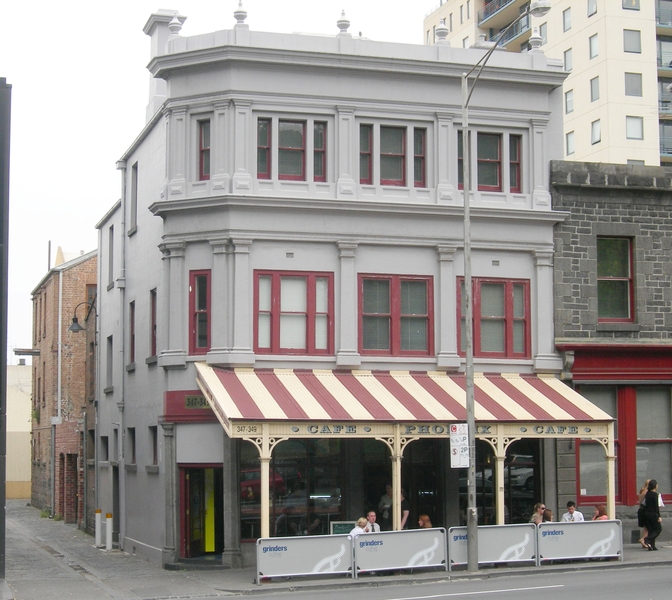
FORMER PHOENIX CLOTHING COMPANY SOHE 2008






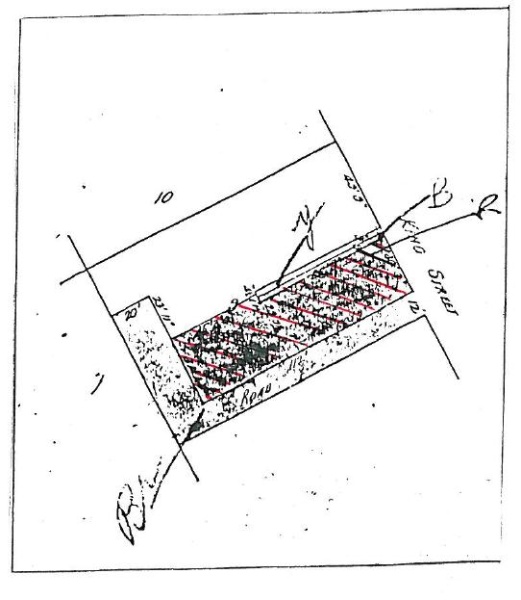
On this page:
Statement of Significance
What is significant?
The Former Phoenix Clothing Company building is a three storey stone and brick shop, residence and store complex. It contains fabric from several different periods of building and alteration. The earliest section dates from the early goldrush era, while three storey additions were made in 1859 and the ground floor of the rear store/factory section probably dates from the 1860s. An 1869 photograph of the building showed a loggia, but this has been filled with windows.
How is it significant?
The Former Phoenix Clothing Company building is of historical and architectural significance to the State of Victoria.
Why is it significant?
The Former Phoenix Clothing Company building is of historical significance as one of the oldest examples of a commercial building and factory in the State. Its King Street facade contains rare goldrush-era elements, from a time when King Street was an unmade although busy road with bullock drays and other carriers' wagons, loaded with goods, continually passing on their way to Bendigo and the other diggings. The factory proper dates from the 1860s and provides important evidence of the character of early industrial organisation in Melbourne. The Phoenix Clothing Company was established in the wake of post gold rush metropolitan growth and benefited from the introduction of tariff legislation in the 1870s. The Phoenix factory was one of the few mechanised 19th century clothing manufacturers, and has been credited with introducing advanced overseas technology to Victoria. Although there have been many structural changes to the building over the years, the essential design and structure of the complex provide a substantially intact representation of contemporary factory design and working conditions, and of aspects of 19th century building technology.
The Former Phoenix Clothing Company building is of historical significance as evidence of the character of Melbourne's early development. The combination of residence, shop and factory is a reminder of a time when the city was much more compact, and residence and workplace were often located in the same building or very nearby. The building also demonstrates the long-term continuity of industrial usage in this part of Melbourne.
The Former Phoenix Clothing Company building is of historical significance for its associations with the notable Fenwick Brothers, and Albion T. Walkley. The Fenwick Brothers were London clothing manufacturers and importers, who owned the site from the 1850s and established the Phoenix Clothing Company there in the 1870s. Orlando Fenwick (1822-1897) who once lived on the premises, was a prominent Victorian clothing manufacturer and importer. He also took a leading role in Melbourne harbour development schemes and was a Melbourne City councillor over a long period and Mayor of the city. Walkley, the factory manager from 1875 and owner of the manufacturing section of the business from 1878, was responsible for introducing into the Victorian clothing trade the innovative mechanical knife system of cutting which revolutionised the industry in the pre-WW1 period.
The Former Phoenix Clothing Company building is of architectural significance because of its first floor loggia, perhaps the earliest example in Melbourne (although it has subsequently been built in, it is restorable) and as part of a coherent mid-19th century commercial streetscape which gives some idea of the architectural character of this part of Melbourne in the post-gold rush period.
The Former Phoenix Clothing Company building is a three storey stone and brick shop, residence and store complex. It contains fabric from several different periods of building and alteration. The earliest section dates from the early goldrush era, while three storey additions were made in 1859 and the ground floor of the rear store/factory section probably dates from the 1860s. An 1869 photograph of the building showed a loggia, but this has been filled with windows.
How is it significant?
The Former Phoenix Clothing Company building is of historical and architectural significance to the State of Victoria.
Why is it significant?
The Former Phoenix Clothing Company building is of historical significance as one of the oldest examples of a commercial building and factory in the State. Its King Street facade contains rare goldrush-era elements, from a time when King Street was an unmade although busy road with bullock drays and other carriers' wagons, loaded with goods, continually passing on their way to Bendigo and the other diggings. The factory proper dates from the 1860s and provides important evidence of the character of early industrial organisation in Melbourne. The Phoenix Clothing Company was established in the wake of post gold rush metropolitan growth and benefited from the introduction of tariff legislation in the 1870s. The Phoenix factory was one of the few mechanised 19th century clothing manufacturers, and has been credited with introducing advanced overseas technology to Victoria. Although there have been many structural changes to the building over the years, the essential design and structure of the complex provide a substantially intact representation of contemporary factory design and working conditions, and of aspects of 19th century building technology.
The Former Phoenix Clothing Company building is of historical significance as evidence of the character of Melbourne's early development. The combination of residence, shop and factory is a reminder of a time when the city was much more compact, and residence and workplace were often located in the same building or very nearby. The building also demonstrates the long-term continuity of industrial usage in this part of Melbourne.
The Former Phoenix Clothing Company building is of historical significance for its associations with the notable Fenwick Brothers, and Albion T. Walkley. The Fenwick Brothers were London clothing manufacturers and importers, who owned the site from the 1850s and established the Phoenix Clothing Company there in the 1870s. Orlando Fenwick (1822-1897) who once lived on the premises, was a prominent Victorian clothing manufacturer and importer. He also took a leading role in Melbourne harbour development schemes and was a Melbourne City councillor over a long period and Mayor of the city. Walkley, the factory manager from 1875 and owner of the manufacturing section of the business from 1878, was responsible for introducing into the Victorian clothing trade the innovative mechanical knife system of cutting which revolutionised the industry in the pre-WW1 period.
The Former Phoenix Clothing Company building is of architectural significance because of its first floor loggia, perhaps the earliest example in Melbourne (although it has subsequently been built in, it is restorable) and as part of a coherent mid-19th century commercial streetscape which gives some idea of the architectural character of this part of Melbourne in the post-gold rush period.
Show more
Show less
-
-
FORMER PHOENIX CLOTHING COMPANY - History
Contextual History:History of Place:
This factory was specifically built to accommodate clothing manufacture, as evidenced by the provision of natural light and ventilation and by the use of timber lining in the internal finishes to improve insulation and reduce dust and lint traps. The factory showed quite advanced industrial organisation, which is interesting because it pre-dates factories legislation of the 1870s.
Associated People:
FORMER PHOENIX CLOTHING COMPANY - Permit Exemptions
General Exemptions:General exemptions apply to all places and objects included in the Victorian Heritage Register (VHR). General exemptions have been designed to allow everyday activities, maintenance and changes to your property, which don’t harm its cultural heritage significance, to proceed without the need to obtain approvals under the Heritage Act 2017.Places of worship: In some circumstances, you can alter a place of worship to accommodate religious practices without a permit, but you must notify the Executive Director of Heritage Victoria before you start the works or activities at least 20 business days before the works or activities are to commence.Subdivision/consolidation: Permit exemptions exist for some subdivisions and consolidations. If the subdivision or consolidation is in accordance with a planning permit granted under Part 4 of the Planning and Environment Act 1987 and the application for the planning permit was referred to the Executive Director of Heritage Victoria as a determining referral authority, a permit is not required.Specific exemptions may also apply to your registered place or object. If applicable, these are listed below. Specific exemptions are tailored to the conservation and management needs of an individual registered place or object and set out works and activities that are exempt from the requirements of a permit. Specific exemptions prevail if they conflict with general exemptions. Find out more about heritage permit exemptions here.
-
-
-
-
-
FORMER ROYAL AUSTRALIAN ARMY MEDICAL CORPS TRAINING DEPOT
 Victorian Heritage Register H0717
Victorian Heritage Register H0717 -
MITRE TAVERN
 Victorian Heritage Register H0464
Victorian Heritage Register H0464 -
MELBOURNE SAVAGE CLUB
 Victorian Heritage Register H0025
Victorian Heritage Register H0025
-
..esterville
 Yarra City
Yarra City -
1 Alfred Crescent
 Yarra City
Yarra City -
1 Barkly Street
 Yarra City
Yarra City
-
-







